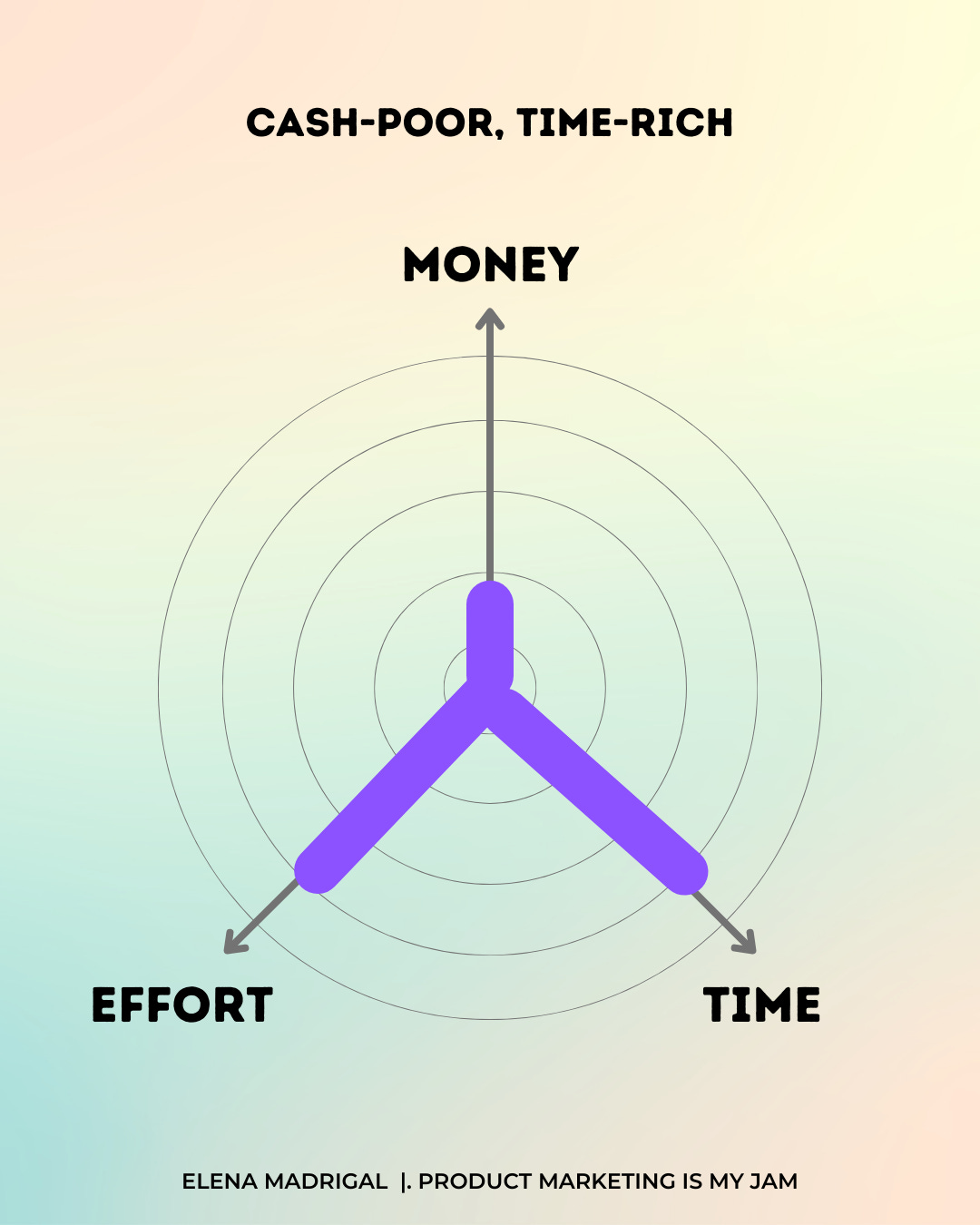Value pricing isn't just about offering the right features for the price customers are willing to pay. It's about understanding what customers really consider when they think about cost.
This includes 3 key dimensions:
💰 Money: What's the price tag?
💪 Effort: How much thought and mental energy does it require?
⏰ Time: How long does it take to learn, use, or set up?
The appeal of Free products is strong because it removes the Money factor and reduces Effort. No need for credit cards, data entry, or checkout process; it's all about how quickly the product can start working for you. That’s why Fast and Easy often go hand-in-hand.
Playing with these dimensions depends on the maturity of the market and the priorities of your customers.
Commodity Product, Mature Market
A product in a commoditized mature market can’t be very high on any dimension. Take dishwasher tablets, they have made dishwashing easy and more efficient, so consumers are not going to choose a costly, complicated, or time-consuming option. A disruptive innovation would be needed before they even consider increasing the cost on any dimension.
New Technology, Early Adopter
Consider the first-generation MP3 players for early adopters. They were expensive, required software for CD conversion, and additional software for music transfer. Early adopters were okay with the extra Money, Effort, and Time. However, this doesn't work for everyone, leading to failure to reach wider adoption when the dimensions don’t get balanced.
Cash-Poor, Time-Rich
If your target audience is cash-poor but time-rich, like students, focus on making your product free or cheap rather than fast or easy to install.
Time-Poor, Cash-Rich
For this market, don't stress about high prices. Instead, focus on making the purchase effortless. Improve your documentation, streamline the checkout process, and ensure fast and easy deployment.
This value dimension concept applies to B2B as well. Just replace Effort and Time with Service and Process. Sales can be lost if conversations focus too much on Money. Often, customers drive this focus.
But what if you shift the conversation to Service or Process? Most sales discussions start with Product and Money. Customers want to know how their problems can be solved within their budget. However, the hidden costs of a poor Service or Process are often overlooked.
Ask questions. You might discover that the real issue lies in a different value dimension than you or your customer initially thought.









